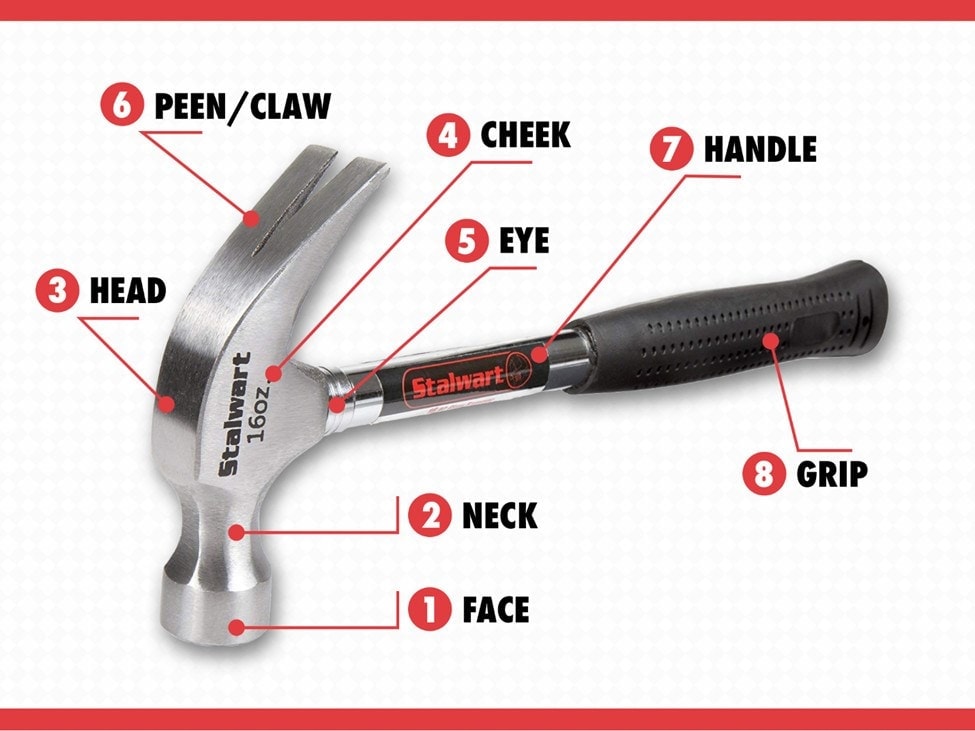Parts of a Hammer (Explained with Pictures)
-

- Last updated:


For their simple, almost primitive look, hammers are incredibly versatile and specifically designed tools. Depending on what you most need a hammer for, manufacturers produce various designs to fit your needs. Knowing the parts of a hammer and how they function will go a long way in helping you select the ideal hammer.

The Parts of a Hammer
1. Face
The face is the striking surface of a hammer. It’s usually pretty easy to tell what a hammer is designed for based on the shape and size of the face relative to the rest of the tool. Tack hammers, for instance, have small faces because they do detailed work. A sledgehammer, designed for brute strength, has a large face.
2. Neck
A hammer’s neck is what attaches the head to the handle. Just like with the face, if you have a hammer designed for brute strength, you’ll probably not have much of a neck. But if you have a hammer designed for precision work, it will have a larger neck to give you better visibility.
3. Head
The two basic elements of a hammer are a handle and the head. The head includes the face, and the hammer’s intended use will determine the basic design of the head. Hammers for rock and metal look like big rocks on top of the handle. Hammers for wood tend to have a streamlined design.
4. Cheek
Whatever the hammer’s purpose, the head will have two cheeks, which are the two horizontal sides of the hammer’s head. The hammer’s purpose determines the shape of the cheek. Normally, you don’t use a hammer’s cheek for anything, but it can serve as a makeshift face in a pinch.
5. Eye
The eye is the hole at the bottom of the head that slips over the handle. Hammers used for wood have necks, while hammers for rock and metal don’t, so wood hammers have eyes, and those for metal and rock don’t.
6. Peen/Claw
Most people own a pretty basic wood hammer. On the side of the head opposite the face is a claw used to pull up nails. However, sledgehammers don’t have claws since both sides can serve as the face. Specialized hammers for metal have peens instead of claws. The peen is used for shaping metal.
- RELATED POST: Which is our favorite all-time nail-pulling tool?
7. Handle
If one essential element of every hammer is the head, the other is the handle. Most hammers have a very simple handle made of wood. However, some models have metal or fiberglass handles.
8. Grip
The rubber sleeve around the handle is the grip. You aren’t going to find a grip on every hammer because it’s not needed. If you need a hammer where maintaining a solid hold on it is crucial, you’ll need a grip. If you’re driving in tent spikes, you don’t.

What Basic Types of Hammers are There?
We also recently published a post where we go over ALL the 22 types of hammers and their unique uses.

Conclusion
Hammers are versatile tools for removing and hammering nails, shaping materials like metal, and demolition. The parts of the handle vary slightly depending on the design, and specialized tools often modify or omit various parts. Although a standard hammer designed for wood is an essential tool, you may add other models to your collection if you become involved in more detailed work.
Contents
